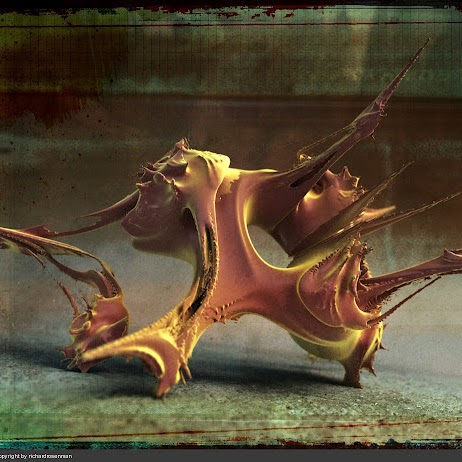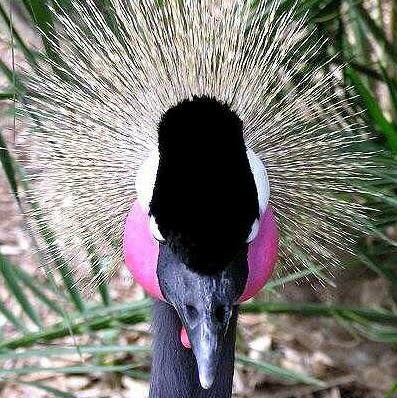Douglas K Christensen
age ~78
from Eagle, ID
- Also known as:
-
- Douglas Fam Christensen
- Douglas Tru Christensen
- Douglas Pt Christensen
- Douglas Christensen Revocab
- Doug K Christensen
- Douglas K Christianson
- Dou Christensen
- Christensen Dou
Douglas Christensen Phones & Addresses
- Eagle, ID
- 272 W 1060 S, Orem, UT 84058 • (801)2220962 • (801)2255029
- Saint George, UT
- Cedar Hills, UT
- 7 Wymount Ter #C, Provo, UT 84604 • (801)2255029
- Salt Lake City, UT
Work
-
Company:Christensen, Fonder, Dardi & Herbert PLLC
-
Address:
Specialities
Intellectual Property
Us Patents
-
Apparatus For Multichannel Fluorescent Immunoassays
view source -
US Patent:6340598, Jan 22, 2002
-
Filed:Dec 8, 1998
-
Appl. No.:09/207187
-
Inventors:James N. Herron - Salt Lake City UT
Douglas A. Christensen - Salt Lake City UT
Karin D. Caldwell - Salt Lake City UT
Vera Janatová - Prague, CZ
Shao-Chie Huang - Salt Lake City UT
Hsu-Kun Wang - Salt Lake City UT -
Assignee:University of Utah Research Foundation - Salt Lake City UT
-
International Classification:G01N 33543
-
US Classification:436518, 385 12, 385123, 422 55, 422 57, 422 8205, 422 8208, 422 8211, 435 75, 4352871, 4352872, 4352887, 435808, 436164, 436172, 436512, 436527, 436805
-
Abstract:Methods and apparatus for evanescent light fluoroimmunoassays are disclosed. The apparatus employs a planar waveguide and optionally has multi-well features and improved evanescent field intensity. The preferred biosensor and assay method have the capture molecules immobilized to the waveguide surface by site-specific coupling chemistry. Additionally, the coatings used to immobilize the capture molecules provide reduced non-specific protein adsorption.
-
Lens And Associatable Flow Cell
view source -
US Patent:6356676, Mar 12, 2002
-
Filed:Jun 30, 2000
-
Appl. No.:09/608714
-
Inventors:James N. Herron - Salt Lake City UT
Douglas A. Christensen - Salt Lake City UT
Victor A. Pollak - Salt Lake City UT
Richard D. McEachern - Ann Arbor MI
Eric M. Simon - Salt Lake City UT -
Assignee:University of Utah Research Foundation - Salt Lake City UT
-
International Classification:G02B 626
-
US Classification:385 12, 385 15, 385 33, 385 37, 385130, 385146, 422 8211
-
Abstract:Improvements in a biosensor of the type having reservoirs or wells for analyzing a biological liquid are disclosed. A biosensor includes a waveguide placed between a plurality of members such as plates at least one of the members being formed to define the walls of the reservoirs where the liquid is biologically analyzed. The walls of the reservoirs are made of an inert, opaque material such as a metal. Although the biosensor may include a gasket, the gasket is associated with the members and waveguide in such a way (e. g. , by recessing the gasket into a channel formed into a metal plate) so that the gasket does not form any significant portion of the reservoir wall. Waveguides of varying composition (e. g. , plastic, quartz or glass) may be associated with the members to form the biosensor. The metal plate of the biosensor has input and output ports for infusing, draining, or oscillating the liquid to be analyzed in the reaction reservoir.
-
Lens And Associatable Flow Cell
view source -
US Patent:6611634, Aug 26, 2003
-
Filed:Mar 11, 2002
-
Appl. No.:10/095540
-
Inventors:James N. Herron - Salt Lake City UT
Douglas A. Christensen - Salt Lake City UT
Victor A. Pollak - Salt Lake City UT
Richard D. McEachern - Ann Arbor MI
Eric M. Simon - Salt Lake City UT -
Assignee:University of Utah Research Foundation - Salt Lake City UT
-
International Classification:G02B 600
-
US Classification:385 12, 385 14, 385129, 385130, 385131, 385 33, 422 8205, 422 8211, 436518, 356317
-
Abstract:Improvements in a biosensor are disclosed. A biosensor includes a waveguide, at least a portion of which is substantially planar. One or more reservoirs may be formed adjacent to a chemistry-bearing surface of the waveguide. The biosensor may include a gasket to form a seal between the waveguide and side walls of the reservoir. A sample solution may be introduced into the reservoir or otherwise onto the surface of a waveguide through an input port. Waveguides of varying composition (e. g. , plastic, quartz, glass, or other suitable waveguide materials) may be used in the biosensor. Also disclosed is a sled-shaped waveguide, which includes a planar portion and a lens at an end thereof and angled relative thereto for coupling light into the waveguide.
-
Apparatus And Methods For Multi-Analyte Homogeneous Fluoro-Immunoassays
view source -
US Patent:6979567, Dec 27, 2005
-
Filed:Nov 13, 2001
-
Appl. No.:10/008339
-
Inventors:James N. Herron - Salt Lake City UT, US
Douglas A. Christensen - Salt Lake City UT, US
Hsu-Kun Wang - Salt Lake City UT, US
Karin Caldwell - Salt Lake City UT, US
Vera Janatová - Prague, CZ
Shao-Chie Huang - Salt Lake City UT, US -
Assignee:BioCentrex, LLC - Culver City CA
-
International Classification:C12M003/00
-
US Classification:4352871, 422 55, 422 57, 422 58, 422 8205, 422 8208, 422 8211, 4352872, 4352879, 4352885, 4352887, 435808, 436164, 436165, 436514, 436518, 436527, 436531, 436805, 436807, 385 12, 385129, 385130, 356418
-
Abstract:Methods and apparatus for evanescent light fluoroimmunoassays are disclosed. The apparatus employs a planar waveguide with an integral semicylindrical lens, and has multi-analyte features and calibration features, along with improved evanescent field intensity. A preferred embodiment of the biosensor and assay method has patches of capture molecules, each specific for a different analyte disposed adjacently within a single reservoir. The capture molecules are immobilized to the patches on the waveguide surface by site-specific coupling of thiol groups on the capture molecules to photo-affinity crosslinkers, which in turn are coupled to the waveguide surface or to a nonspecific binding-resistant coating on the surface. The patches of different antibodies are produced by selectively irradiating a portion of the waveguide surface during the process of coupling the photo-affinity crosslinkers, the selective irradiation involving a mask, a laser light source, or the like.
-
Waveguide Immunosensor With Coating Chemistry And Providing Enhanced Sensitivity
view source -
US Patent:7022515, Apr 4, 2006
-
Filed:Oct 5, 2001
-
Appl. No.:09/971467
-
Inventors:James N. Herron - Salt Lake City UT, US
Douglas A. Christensen - Salt Lake City UT, US
Karin D. Caldwell - Salt Lake City UT, US
Vera Janatová - Prague, CZ
Shao-Chie Huang - Salt Lake City UT, US
Hsu-Kun Wang - Salt Lake City UT, US -
Assignee:University of Utah Research Foundation - Salt Lake City UT
-
International Classification:C12M 3/00
-
US Classification:4352871, 356317, 356318, 356244, 356246, 385 12, 385129, 385130, 422 57, 422 58, 422 8205, 422 8208, 422 8211, 435 75, 4352872, 4352887, 435808, 436164, 436172, 436518, 436527, 436805
-
Abstract:Methods and apparatus for evanescent light fluoroimmunoassays are disclosed. The apparatus employs a planar waveguide and optionally has multi-well features and improved evanescent field intensity. The preferred biosensor and assay method have the capture molecules immobilized to the waveguide surface by site-specific coupling chemistry. Additionally, the coatings used to immobilize the capture molecules provide reduced non-specific protein adsorption.
-
Lens And Associatable Flow Cell
view source -
US Patent:RE39772, Aug 14, 2007
-
Filed:Mar 19, 1997
-
Appl. No.:10/225687
-
Inventors:James N. Herron - Salt Lake City UT, US
Douglas A. Christensen - Salt Lake City UT, US
Victor A. Pollack - Salt Lake City UT, US
Richard D. McEachern - Ann Arbor MI, US
Eric M. Simon - Salt Lake City UT, US -
Assignee:University of Utah Research Foundation - Salt Lake City UT
-
International Classification:G02B 6/26
G02B 6/10
G01N 21/00
G01N 33/552
G01N 33/72 -
US Classification:385 12, 385 15, 385 33, 385 37, 385130, 385146, 422 8211
-
Abstract:Improvements in a biosensor of the type having reservoirs or wells for analyzing a biological liquid are disclosed. A biosensor () includes a waveguide () placed between a plurality of members such as plates (), at least one of the members () being formed to define the walls () of the reservoirs where the liquid is biologically analyzed. The walls of the reservoirs are made of an inert, opaque material such as a metal. Although the biosensor may include a gasket (), the gasket is associated with the members and waveguide in such a way (e. g. by recessing the gasket into a channel formed into a metal plate) so that the gasket does not form any significant portion of the reservoir wall. Waveguides of varying composition (e. g. plastic, quartz or glass) may be associated with the members to form the biosensor. The metal plate of the biosensor has input and output ports for infusing, draining, or oscillating the liquid to be analyzed in the reaction reservoir.
-
Diagnostic Device And Method
view source -
US Patent:20010019405, Sep 6, 2001
-
Filed:Apr 20, 2001
-
Appl. No.:09/839778
-
Inventors:James Herron - Salt Lake City UT, US
Douglas Christensen - Salt Lake City UT, US
Jacob Durtschi - Salt Lake City UT, US -
International Classification:G01N033/48
-
US Classification:356/039000
-
Abstract:A method and apparatus of diagnosing a cardiac disease state in as little as two minutes involving the utilization of an evanescent wave assay system in conjunction with a data acquisition and analysis procedure that monitors the precision of assay results in real time (i.e., while data is being acquired). The method includes diagnosing a disease state using a diagnostic procedure (e.g., an immunoassay) wherein the testing device informs the person conducting the test of the results of the test as soon as reliable test data is obtained (generally,
-
Diagnostic Device And Method
view source -
US Patent:20010030741, Oct 18, 2001
-
Filed:Jun 8, 2001
-
Appl. No.:09/877635
-
Inventors:James Herron - Salt Lake City UT, US
Douglas Christensen - Salt Lake City UT, US
Jacob Durtschi - Salt Lake City UT, US -
International Classification:G01N033/48
-
US Classification:356/039000
-
Abstract:A method and apparatus of diagnosing a cardiac disease state in as little as two minutes involving the utilization of an evanescent wave assay system in conjunction with a data acquisition and analysis procedure that monitors the precision of assay results in real time (i.e., while data is being acquired). The method includes diagnosing a disease state using a diagnostic procedure (e.g., an immunoassay) wherein the testing device informs the person conducting the test of the results of the test as soon as reliable test data is obtained (generally,
Medicine Doctors

Douglas D. Christensen
view sourceDescription:
Dr. Christensen graduated from the Universidad Autu00F3noma de Guadalajara, Guadalajara, Jalisco, Mexico in 1998. He works in Lone Tree, CO and 1 other location and specializes in Pediatric Cardiology. Dr. Christensen is affiliated with Rocky Mountain Hospital For Children and Sky Ridge Medical Center.
Resumes

Douglas Christensen
view source
Douglas Christensen
view source
Owner, I Have Just Retired
view sourcePosition:
Owner at I have just retired
Location:
Boise, Idaho Area
Industry:
Construction
Work:
I have just retired
Owner
Owner
License Records
Douglas N Christensen
Address:
Pleasant Grove, UT
License #:
311416-6201 - Expired
Category:
Health Care Assistant
Issued Date:
Oct 16, 1995
Expiration Date:
Nov 30, 1998
Type:
Health Care Assistant - Obsolete
Douglas Driggs Christensen Md
License #:
23439 - Active
Category:
Medicine
Issued Date:
Aug 19, 2005
Effective Date:
Oct 3, 2006
Expiration Date:
Oct 1, 2018
Type:
Physician
Lawyers & Attorneys

Douglas Christensen - Lawyer
view sourceOffice:
Christensen, Fonder, Dardi & Herbert PLLC
Specialties:
Intellectual Property
ISLN:
908396779
Admitted:
1985
University:
University of Minnesota, B.S., 1977
Law School:
Hamline University, J.D., 1985
Name / Title
Company / Classification
Phones & Addresses
Owner
Bonneville Bank
Banks
Banks
PO Box 400, Provo, UT 84603
(801)3749500, (801)3771036
(801)3749500, (801)3771036
Owner
Cirque Property Management Co., LC
Property Management
Property Management
10011 Centennial Pkwy STE 275, Sandy, UT 84070
(801)3049300, (801)3049304
(801)3049300, (801)3049304
Owner
Alyeska Resort Properties
10011 Centennial Pkwy SUITE 275, Sandy, UT 84070
Owner
Alyeska Resort Real Estate
10011 Centennial Pkwy SUITE 275, Sandy, UT 84070
Owner
Alyeska Resort Brokers
10011 Centennial Pkwy SUITE 275, Sandy, UT 84070
Owner
Alyeska Resort Property Management
10011 Centennial Pkwy SUITE 275, Sandy, UT 84070
Owner
CIRQUE PROPERTY MANAGEMENT CO., LC
Property Management
Property Management
10011 S Centennial Pkwy #275, Sandy, UT 84070
(801)3049300, (801)3049304
(801)3049300, (801)3049304
Owner
BONNEVILLE BANK
State Commercial Bank
State Commercial Bank
1675 N Freedom Blvd, Provo, UT 84604
PO Box 400, Provo, UT 84603
(801)3749500, (801)3771036
PO Box 400, Provo, UT 84603
(801)3749500, (801)3771036

Douglas Christensen
view sourceGoogleplus

Douglas Christensen
Education:
Grand Rapids Community College - Computer Science, Brimley High School
Relationship:
Engaged
About:
Jack of all trades, gamer (Xbox: Dubhghlas), lefty, weather lover (severe storms and tropics), computer nerd.
Tagline:
Extremely Liberal, Gamer, Computer Nerd
Bragging Rights:
My future trophy wife.

Douglas Christensen

Douglas Christensen

Douglas Christensen

Douglas Christensen

Douglas Christensen

Douglas Christensen

Douglas Christensen
Plaxo

Douglas Peter Christensen
view sourcePinckney, MISr Management Analyst at Better Made Snack Foods
Youtube
Get Report for Douglas K Christensen from Eagle, ID, age ~78





